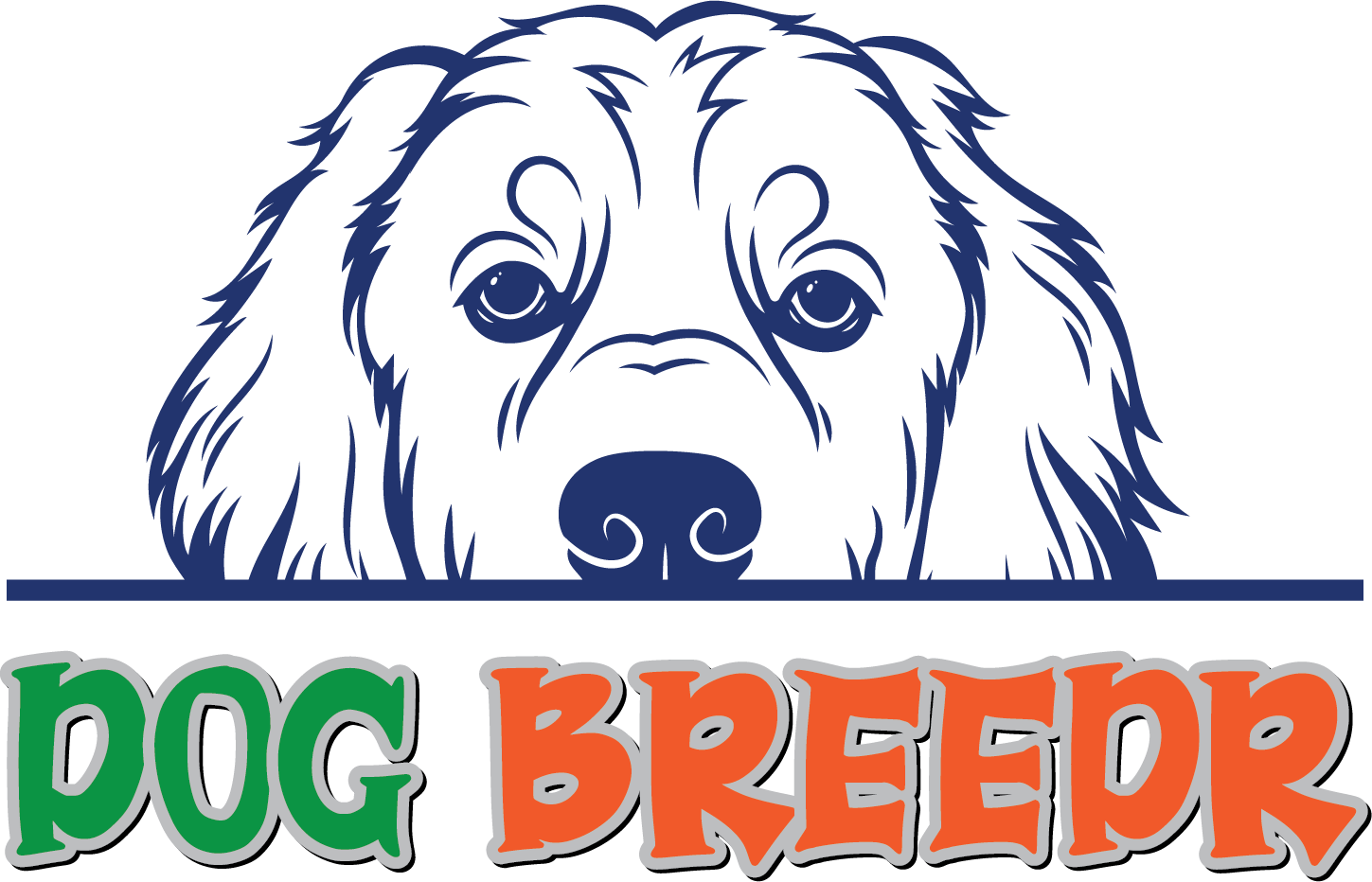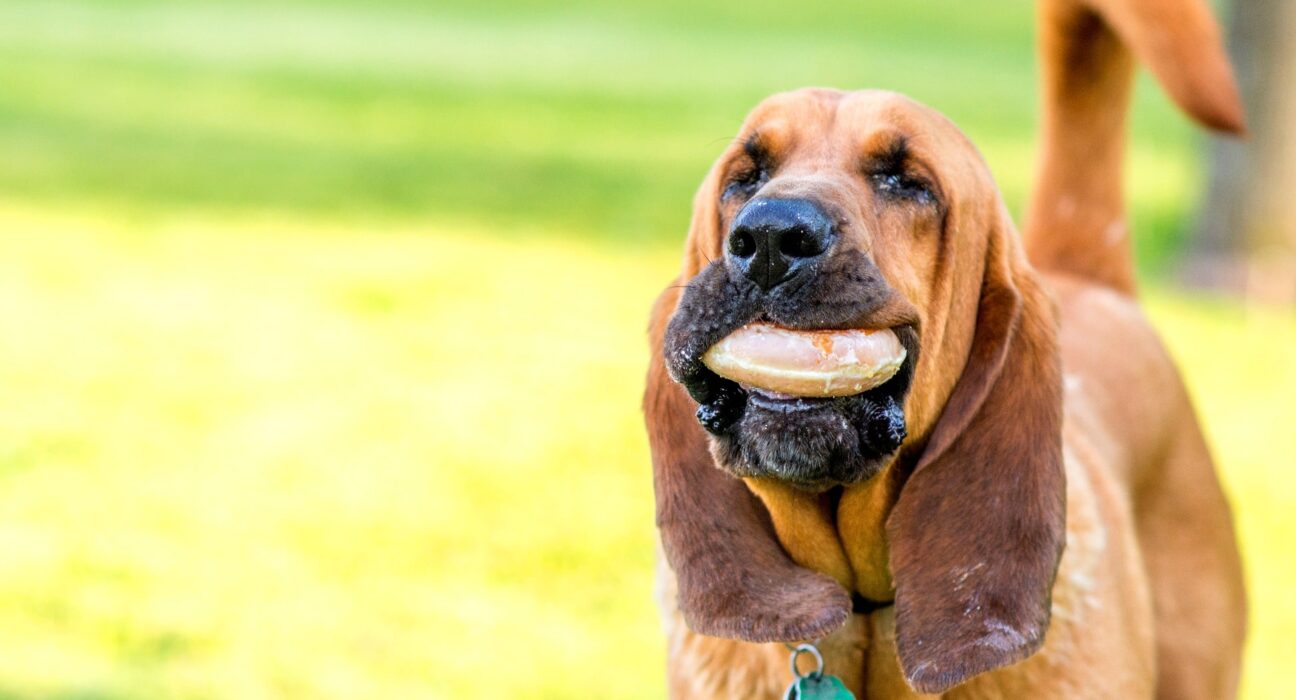The Bloodhound is a breed of large hound dog that has been used for hunting since the Middle Ages. It is known for its strong sense of smell, speed, stamina, and courageous nature.
The Bloodhound is an excellent tracking and trailing dog, making it ideal for search-and-rescue operations in law enforcement. The Bloodhound also makes a wonderful family pet with its noble bearing and loyal personality.
Bloodhound History
The Bloodhound is an ancient breed of a dog believed to have originated in the regions of England and France.
Historians believe that monks used these hounds in medieval Europe to track and hunt large game such as deer.
The dog became widely popular among English nobility during the 16th century. It eventually made its way to the United States, where it was used primarily for hunting rabbits, foxes, and other small game.
Appearance
The Bloodhound is a large dog that stands 25-27 inches tall and weighs between 90-110 pounds. They have a long muzzle with an adjustable nose bridge, allowing them to take long, deep breaths to pick up scents easily. Their coat is short, hard, and smooth, typical colors being red, black & tan, or liver & tan.
Temperament
Bloodhounds are gentle, loyal family dogs that require little grooming and enjoy spending time with their owners.
They tend to be strong-willed but not aggressive toward people or other animals. They are intelligent and eager to please, making them easy to train with patience.
Activity Level
Bloodhounds require a significant amount of exercise to stay healthy and content. A minimum of two hours of running and walking each day is recommended, as well as plenty of playtime.
As they have an excellent sense of smell, they enjoy activities challenging their noses, such as scent work or tracking games.
Health Issues
Bloodhound health issues can vary depending on the individual dog. However, some of the most common problems that affect this breed include hip dysplasia, bloat (gastric dilatation volvulus), ear infections, and eye conditions such as entropion or ectropion.
- Hip dysplasia
Hip dysplasia is a condition where the head of the thighbone doesn’t fit into its socket correctly in the pelvis.
This causes pain and lameness in affected dogs, although it can be managed with medication and exercise. Hip dysplasia can also lead to arthritis later in life.
- Gastric dilatation volvulus
Gastric dilatation volvulus (also known as bloat) is particularly dangerous for dogs. It occurs when the stomach twists, trapping gas and food inside and cutting off the blood supply to the organ. If not treated quickly, it can be fatal.
- Ear infections
Ear infections are another common health problem due to their long ears, which trap moisture in the ear canal and make them prone to infection.
Signs of an ear infection include redness, odor, discharge, and itching in the affected ear(s). Treatment typically involves antibiotics but may also involve cleaning out excess wax or debris from the ear canal.
- Eye conditions
Finally, eye conditions such as entropion (inward-rolling eyelids) or ectropion (outward-rolling eyelids) can affect your dog.
These can cause irritation, discharge, and discomfort for the dog, putting them at risk for eye infections. In either case, surgery may be necessary to correct the problem.
In addition to these conditions, they can also suffer from other health problems, such as obesity, allergies, and hypothyroidism.
It’s important to monitor your dog’s health regularly with routine visits to the vet to detect any possible issues before they become severe. With proper care and attention, Bloodhound owners can help ensure their pet has a long and healthy life.
Training Tips
When training a Bloodhound, it is important to remember that they are very intelligent and highly sensitive dogs.
It is also important to note that these dogs require much exercise and mental stimulation to stay healthy and happy.
As such, it is recommended that Bloodhound owners invest in regular walks and playtime with their pets.
In addition, positive reinforcement techniques are essential when successfully training a dog. This means rewarding good behavior instead of punishing bad behavior.
Treats can be an effective way to do this; however, it’s worth noting that treats should not be used too frequently, or the dog may become addicted or overweight.
Instead, verbal praise should be employed whenever possible. These dogs are also very food motivated and may respond better if given regular meals throughout the day.
Being patient when training a dog is important, as these dogs can slowly learn new tasks. They will also require plenty of practice and repetition to understand commands.
Furthermore, it’s important to remain consistent with training sessions; this means repeating commands in the same manner every time and not allowing your dog to get away with bad behavior.
If you allow your Bloodhound to get away with something once, they may view it as an invitation for future misbehavior.
Finally, socialization is essential when training Bloodhounds and helping them become well-rounded members of society.
This means introducing them to new people and other animals regularly. This can help prevent aggression and ensure they are comfortable in any situation.
Overall, Bloodhounds are intelligent and sensitive dogs who require patience and consistency when it comes to training.
With the right attitude and technique, you can successfully train your Bloodhound to be a happy, well-mannered member of your family.
Benefits Of Bloodhound
The Bloodhound breed is known for its incredible noses and stamina, but they also have many other benefits.
They are loyal companions that can be trained to do just about anything, from tracking lost children to searching for drugs or explosives.
They are also great guard dogs and make wonderful family pets with their gentle nature. Here are some of the other advantages of owning a Bloodhound:
1) Unparalleled Sense of Smell – Bloodhounds is so popular for search-and-rescue operations because they possess an incredibly keen sense of smell.
This remarkable trait allows them to pick up faint scents that often go undetected by more traditional search methods, making them invaluable in finding missing persons or objects.
2) Great Trackers – Bloodhounds possess a remarkable memory that enables them to remember an individual’s scent and track it down with precision.
This makes them invaluable assets for search-and-rescue operations and hunting trips. They can even be trained to identify specific scents, allowing them to pick up on the presence of certain substances, such as drugs or explosives.
3) Easy to Train – Despite their independent streak, Bloodhounds are surprisingly easy to train due to their natural intelligence and desire to please humans.
This makes them great companions if you take the time and effort to teach basic commands and obedience exercises.
4) Low Maintenance – Most Bloodhound owners find that their pets require minimal maintenance and grooming, making them the perfect choice for busy households. They also have a low-shedding coat that requires only occasional brushing and bathing.
5) Adaptable – Bloodhounds are highly adaptable dogs that can easily thrive in various living environments.
As long as you give them plenty of exercises and mental stimulation, they’ll be perfectly content living in an apartment or house.
These are just a few of the many advantages of owning a Bloodhound. This may be the perfect breed for you if you’re looking for a loyal companion with an incredible sense of smell.
With the right training and care, your Bloodhound can become an invaluable asset to your family and make a great addition to your life.
Conclusion
The Bloodhound is a noble and loyal breed of dog that has been used for hunting since antiquity. Its powerful sense of smell, great speed and stamina, and courageous nature make it an excellent addition to any family.
The Bloodhound requires regular exercise and mental stimulation to remain content and healthy. They will make a loving companion to their owners for many years with proper care.

